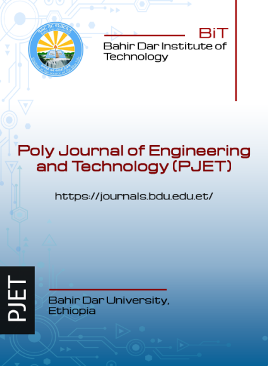Hydrogeomorphic Dynamics of Gumara River at the Lacustrine Plain of Lake Tana (Ethiopia)
Abstract
The role of river bank erosion to sediment yield in alluvial rivers has not received enough attention. The main objective of this study is therefore to quantify upland erosion, channel erosion and deposition from a 30km stretch of the alluvial River, in the lacustrine plain of Lake Tana. The upland erosion was estimated from the upper gauging sites at Wanzaye where event data of stream flow and sediment concentration in 2012 for three months (June 2 to Sep 2) were collected. In-channel deposition and hydrogeomorphic dynamics of the channel were analyzed from aerial photograph analysis of three sets of images (1957, 1982 and 2014). Long term average contribution of bank erosion to the total sediment load at the outlet of the stretch, were analyzed from surface area changes of the image analysis. The result of sediment analysis showed that, the sediment yield decreases from the upper reach to the lower reach during storm periods. The sediment load at the upper reach of Gumara River was 5.9 million tons (i.e.48 t ha-1) which is higher than the lower reach with 5 million tons (i.e., 31 t ha-1) during maximum flows. The result indicated that the main source of sediment during storm periods is the upper catchment and 0.9 million tons of sediment were deposited between the two gauging stations. During the non-storm periods, the sediment load at the upper gauging sites was 0.96 million tons and at the lower gauging sites was 2.3 million tons, indicating that 1.34 million tons of sediment loads is mobilized from the river channel within the period. The image analysis showed that the surface area of the river channel has increased by 3.7 ha within 57 years. The study revealed that the major source of sediment for the alluvial river of Gumara is the upper catchment and channel erosion is not the major contributor to the total sediment load but in-channel deposition is significant.
Copyright (c) 2024 Poly Journal of Engineering and Technology (PJET)

This work is licensed under a Creative Commons Attribution-ShareAlike 4.0 International License.


